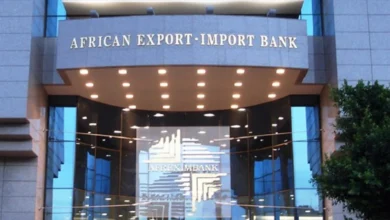
Kenya’s trade deficit, the gap between the value of its exports and imports, narrowed by 12.5 percent in the third quarter of 2023 compared to the same period in 2022, according to the latest data from the Kenya National Bureau of Statistics (KNBS).
The improvement in the trade balance was driven by a sharp increase in export earnings, while import spending declined.
Export Earnings Rise Sharply
According to the KNBS, Kenya’s total exports of goods and services grew by 19.6 percent to Ksh.873.1 billion in the third quarter of 2023, up from Ksh.730.1 billion in the third quarter of 2022.
The growth in exports was attributed to the recovery in global demand, especially from Kenya’s main trading partners such as the European Union, the United States, and the East African Community (EAC). The diversification of export markets and products also contributed to the increase in export earnings.
Some of the products that recorded significant growth in exports include tea, horticulture, coffee, fish, and minerals.
The implementation of the African Continental Free Trade Area (AfCFTA), which came into effect in January 2023, also boosted Kenya’s exports to other African countries.
Import Spending Declines
On the other hand, Kenya’s total imports of goods and services declined by 1.6 percent to Ksh.1.25 trillion in the third quarter of 2023, down from Ksh.1.27 trillion in the third quarter of 2022.
The decline in imports was mainly due to the lower demand for industrial supplies and petroleum products, which account for the largest share of Kenya’s import bill.
The substitution of domestic production for some imports, such as iron and steel, cement, and sugar, also reduced the import spending. The depreciation of the Kenyan shilling, which lost 11.9 percent of its value against the US dollar in the third quarter of 2023, also made imports more expensive.
The impact of the Covid-19 pandemic, which disrupted global supply chains and reduced international travel, also affected the import demand.
Implications for Trade Balance
As a result of the contrasting trends in exports and imports, Kenya’s trade deficit declined to Ksh.379.2 billion in the third quarter of 2023, down from Ksh.433.8 billion in the third quarter of 2022.
This represents a 12.5 percent improvement in the trade balance, which measures the difference between the value of exports and imports.
The narrower trade deficit has positive implications for Kenya’s external sector, as it implies that the country is earning more foreign exchange from its exports than it is spending on its imports. This improves the current account position, which is the broadest measure of the country’s trade with the rest of the world.
It also reduces the external debt burden, as the country does not need to borrow as much to finance its imports. It also increases the foreign exchange reserves, which provide a buffer against external shocks and support the stability of the exchange rate.
Moreover, it enhances the trade competitiveness of the country, as it indicates that the country is producing and exporting more value-added goods and services.
Challenges and Risks
However, Kenya still faces some challenges and risks in maintaining and improving its trade performance. One of the main challenges is the volatility of commodity prices, which can affect the export earnings and the import bill.
For instance, the recent surge in global oil prices, which reached $85 per barrel in October 2023, could increase the cost of importing petroleum products and erode the gains from the lower import spending. Another challenge is the uncertainty of the global economic recovery, which could affect the demand for Kenya’s exports, especially from its major trading partners.
The ongoing Covid-19 pandemic, which has caused new waves of infections and lockdowns in some countries, poses a threat to the global trade outlook.
A third challenge is the competition from other exporters, especially from other African countries that are also benefiting from the AfCFTA. Kenya must enhance its product quality, innovation, and market access to remain competitive in the regional and global markets.
A fourth challenge is the trade barriers and disputes that Kenya faces from some of its trading partners.
For instance, Kenya has been involved in trade spats with Tanzania and Uganda over the imposition of tariffs and non-tariff barriers on some products, such as sugar, dairy, and poultry. Kenya also faces trade restrictions from some of its key export destinations, such as the European Union, which has imposed stringent sanitary and phytosanitary standards on some of Kenya’s agricultural exports, such as beans, peas, and flowers.
A fifth challenge is the environmental and social costs of trade, which could affect the sustainability of Kenya’s trade growth.
For instance, some of Kenya’s export products, such as tea, coffee, and flowers, are highly dependent on water and land resources, which are under pressure from climate change and population growth.
Moreover, some of Kenya’s import products, such as petroleum and coal, have negative impacts on the environment and human health, such as greenhouse gas emissions and air pollution.





